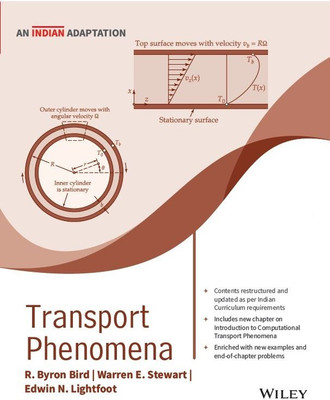Transport Phenomena 2 Edition(Paperback, R. Byron Bird, Warren E. Stewart, Edwin N. Lightfoot)
Quick Overview
Product Price Comparison
Transport Phenomena is a well-established textbook that presents the three topics momentum, heat, and mass transport; and provides an analogous approach to studying these three topics. It is specifically designed for undergraduate and postgraduate level in the Chemical Engineering curriculum. The textbook is centered around these topics covering the basics mechanisms, shell balance approach to develop governing equations, development, and application of equation of change to find the velocity, temperature, concentration profile, and macroscopic approach of transport phenomena.||About the Author||R. Byron Bird ("Bob") was born in Bryan, Texas, on 5 February 1924. After finishing high school in Washington, DC, he started chemical engineering at the University of Maryland in 1941. In mid-1943 he was inducted into the army, went through basic training in Alabama, and to Officer Candidate School in Edgewood Arsenal, Maryland. He was then assigned to the 90th Chemical Mortar Battalion, which soon sailed for Europe. Warren E. Stewart was born on 3 July 1924 in Whitewater, Wisconsin. He became famous as the first student in the history of the College of Engineering to graduate with a straight-A academic record. His MIT experience introduced him to numerical analysis and computational techniques, which proved to be essential at the dawn of the electronic computer age. In World War II, Warren enlisted in the U.S. Naval Reserve (1944-1946). He returned to Wisconsin as a Navy engineering trainee under the V-12 program, and after graduation served as a communications officer on the aircraft carrier USS Midway. Edwin N. Lightfoot ("Ed") was born in Milwaukee, Wisconsin, on 25 September 1925. The next three years he spent as a chemical engineer with the Charles Pfizer pharmaceutical company in Brooklyn, New York. He was invited to the University of Wisconsin as an assistant professor in 1953, with the idea of establishing an undergraduate curriculum in biochemical engineering. This curriculum was ahead of its time and was abandoned within a few years. Nonetheless Ed taught biochemical engineering in courses for seniors and graduate students and maintained a lively graduate research program.


